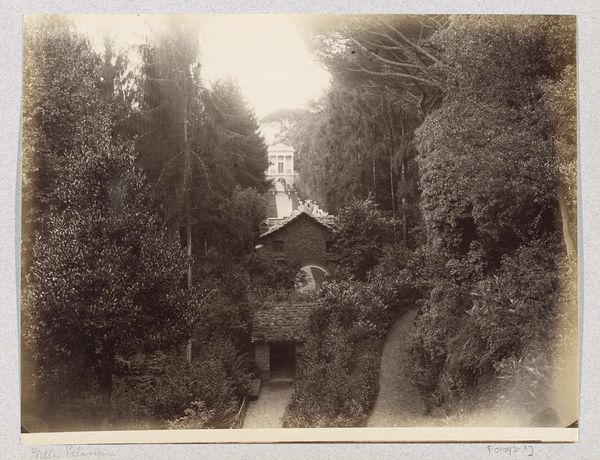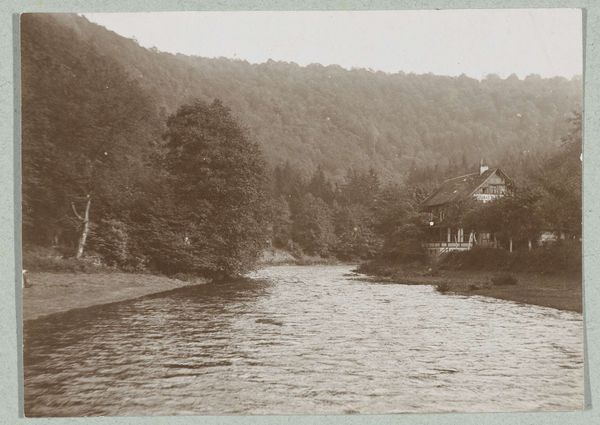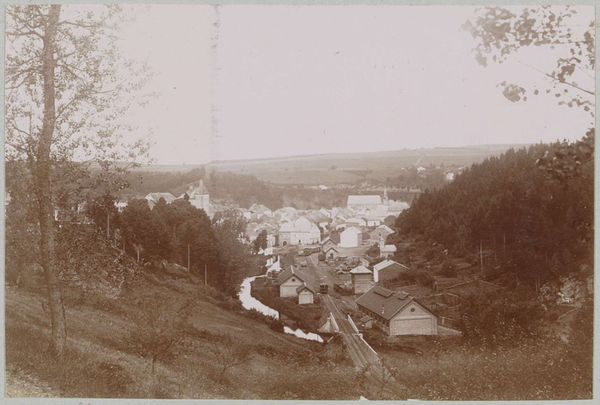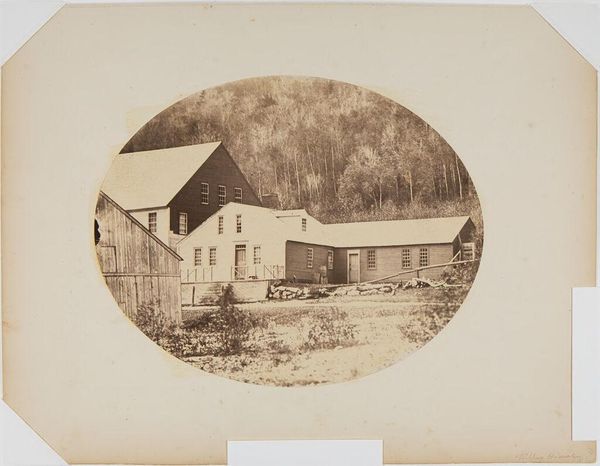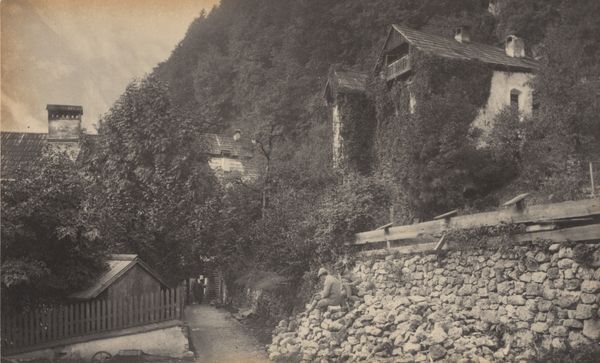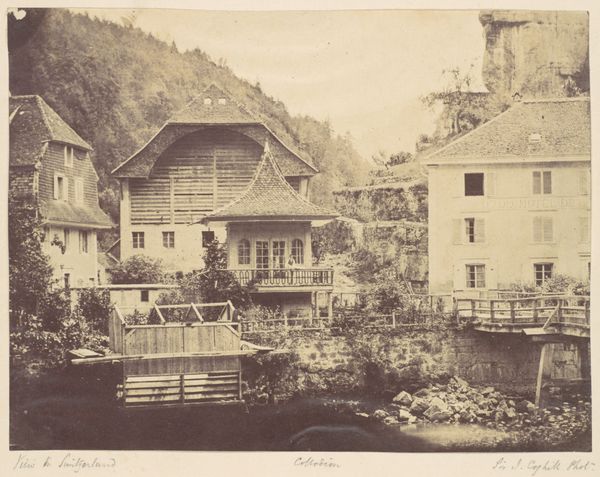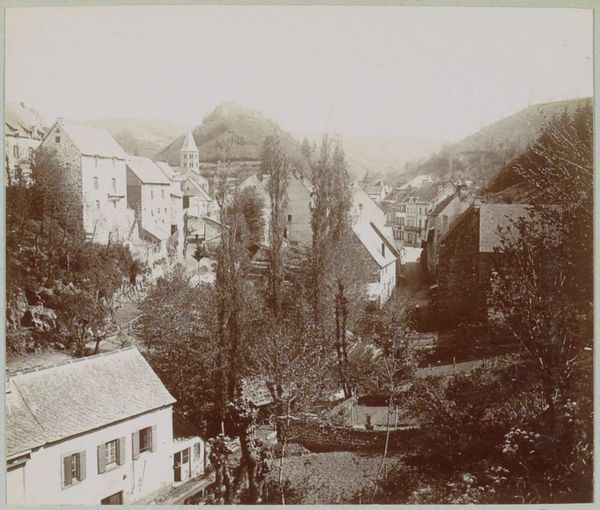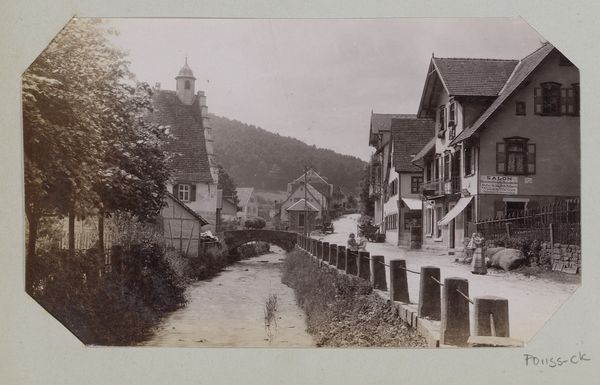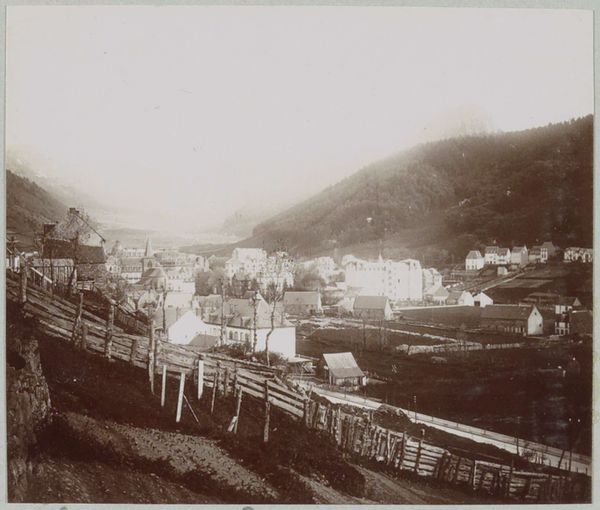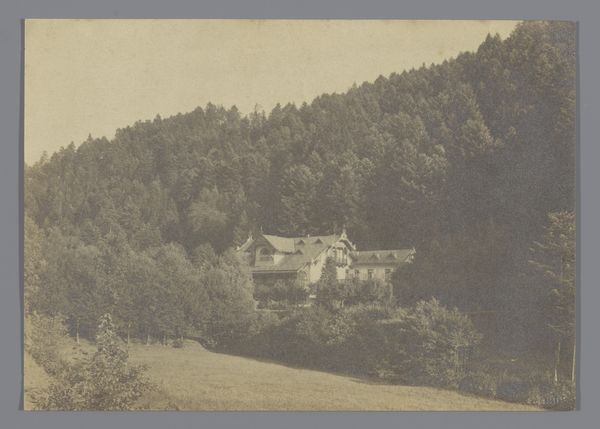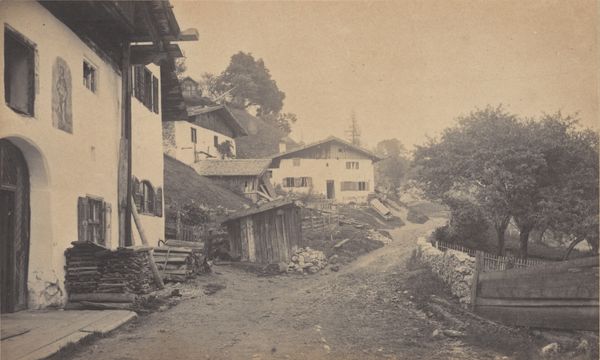
Paardenkarren en reizigers bij Hôtel la Tête Noire op de weg naar Chamonix before 1880
0:00
0:00
photography
#
landscape
#
photography
#
mountain
#
cityscape
#
realism
Dimensions: height 108 mm, width 159 mm
Copyright: Rijks Museum: Open Domain
Curator: This is a fascinating photographic image titled "Paardenkarren en reizigers bij Hôtel la Tête Noire op de weg naar Chamonix," taken before 1880 by Auguste Garcin. It captures a moment on the road to Chamonix, with horse-drawn carriages and travelers gathered near a hotel. Editor: It immediately strikes me as a study in textures. The rough mountain face behind the buildings creates such a contrast with the smooth facade of the Hotel de la Tête Noire. The whole photograph is really oriented around that visual contrast. Curator: Absolutely. And consider the layered symbolism. The hotel itself represents civilization, a temporary haven for weary travelers, while the looming mountain speaks to the timeless power and enduring nature of the environment. Note how the road cuts through nature. It reveals cultural impositions that ease travel. Editor: That layering also occurs structurally within the frame, doesn't it? The building and its facade break up the scene between background and foreground, between the natural world and its inhabitants. See how the rigid architectural form offsets the natural landscape around it? Curator: Precisely. One might see a Jungian archetype at play here, with the "safe house" contrasted against the overwhelming sublimity of untamed nature. It invites reflection upon the human relationship with the world around us. There are horses to provide literal and symbolic horsepower for moving culture and the city out to "civilize" this nature scene. Editor: Yes, and there's also a wonderful depth achieved with light here, isn’t there? The even tonality across the architecture emphasizes a particular flatness, whereas the mountain rises darker in the background and contrasts in a semiotic play between planar surface and infinite depth. Curator: This contrast heightens the emotional tension. It speaks to human aspirations and fragility and to our capacity for imposing structure upon an infinite, almost divine, nature. The figures on the path highlight the smallness of humans relative to that backdrop. The figures are heading somewhere. The road symbolizes transition. Editor: Considering all that, the choice of sepia becomes meaningful as well, I think. It allows the different layers of shadow and texture to play together harmoniously in a unified visual experience that suggests a long, panoramic visual journey. It really blends those contrasting shapes and textures into an emotionally striking, unified photograph. Curator: It certainly prompts a dialogue with time, culture, and the persistent relationship between humanity and the natural world. The interplay of shadow and light brings to life our symbolic relation to landscape and architecture. Editor: It's certainly more visually engaging now that we've unpacked a few of its stylistic qualities. I'm taking away a deeper appreciation of this scene thanks to our chat.
Comments
No comments
Be the first to comment and join the conversation on the ultimate creative platform.
